Benguet State University RESEARCH JOURNAL ...

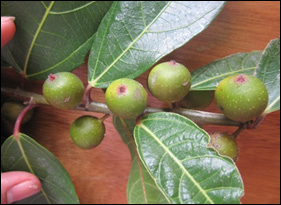
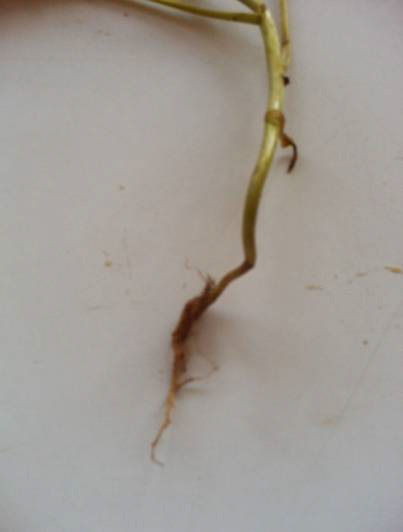
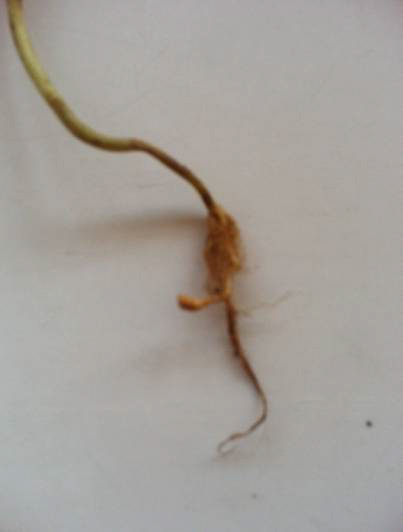
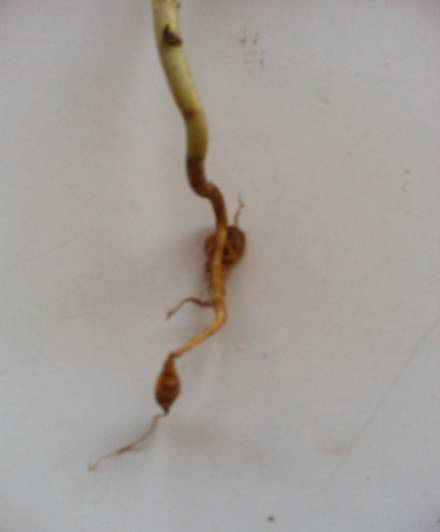

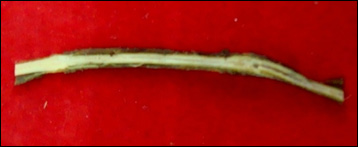
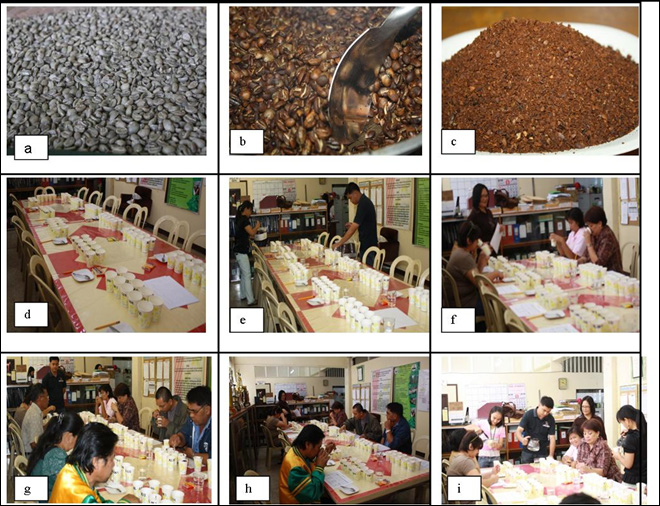
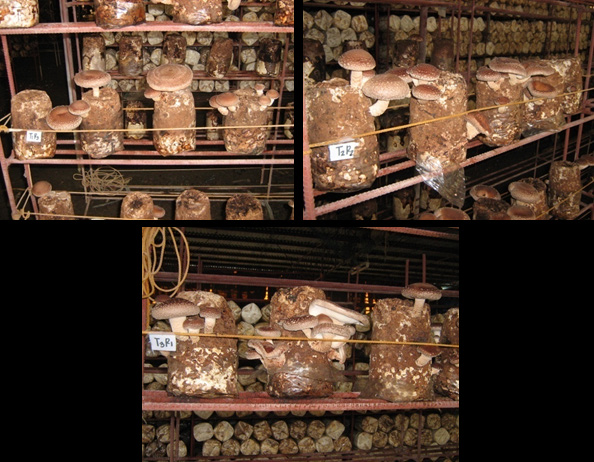
Benguet State University
RESEARCH JOURNAL
ISSN 0117-5297 No. 71 January-June 2014
TABLE OF CONTENTS
MORPHOLOGICAL VARIATIONS, YIELD PERFORMANCE, AND G X E
INTERACTION ANALYSIS IN ARABICA COFFEE CULTIVARS
FOR ORGANIC PRODUCTION IN BENGUET................................................................ 5-22
B. A. Tad-awan and J. D. Doco
MANAGEMENT OF CLUBROOT (Plasmodiophora brassicae Wor.)
on CABBAGE USING Trichoderma KA AND LIME
IN NATUBLENG, BUGUIAS, BENGUET........................................................................ 23-31
J. M. Bulcio and A. L. Nagpala
COLLECTION, IDENTIFICATION AND CHARACTERIZATION
OF INDIGENOUS FRUITS IN BENGUET
AND MOUNTAIN PROVINCE...................................................................................... 32-48
A. G. Ladilad , F. G. Bawang , F. R. Gonzales, S. L. Kudan and A. C. Amado
PATHOLOGIC REACTION OF GARDEN PEA (Pisum sativum L) CULTIVARS/
ADVANCED BREEDING LINES TO Fusarium oxysporum f sp pisi
(Linford) Synder and Hansen.............................................................................................. 49-56
J. R. P. Dimaguiba, L. M. Vil anueva , and J. S. Luis
PROFITABILITY OF CHIPPED ALDER AS SUBSTRATE
FOR SHIITAKE PRODUCTION.....................................................................................
57-63
B. S. Tad-awan
1
2
3
4
All communications should be addressed to:
THE EDITOR
BSU Research Journal
Benguet State Univeristy
La Trinidad, Benguet 2601, Philippines
Telefax:( +6374) 422-5547
Email address: bsupublications@gmail.com
repo@bsu.edu.ph
Website: www.bsu.edu.ph

Benguet State University
RESEARCH JOURNAL
This multidisciplinary scientific journal publishes selected
papers but not limited to those presented during the
annual Benguet State University Agency In-House Review
(Agriculture, Forestry and Natural Resources, Social and
Education Sectors).
Editorial Board
EDITOR
Editor
Bernard S. Tad-awan, PhD
College of Agriculture
Lay-out Artist
Marie Fe B. Wance
Office of the Vice President for Research and Extension
Circulation Manager
Jenina P. Balatong
OVPRE-Publication Office
Proofreaders
Jenina P. Balatong
Herman B. Danis
Jonalin April R. Simeon
Sandra P. Picardo
Office of the Vice President for Research and Extension
Technical Editors
Percival B. Alipit, PhD
Ines C. Gonzales, PhD
Janet S. Luis, PhD
Danilo P. Padua, PhD
Belinda A. Tad-awan, PhD
Referees
Teodora D. Balangcod, PhD
University of the Philippines, Baguio City
Nancy S. Bantog, PhD
Department of Science and Technology - CAR
Lily Ann D. Lando, PhD
World Fish Philippines
Lorenza G.Lirio, PhD
Retired Professor, Benguet State University
Teresita S. Mangili, PhD
Bureau of Plant Industry-CAR
Editorial Consultants
Luciana M. Villanueva, PhD
Vice President for Research and Extension
Ben D. Ladilad, PhD, CESO III
University President
This is a refereed Journal
Benguet State University Research Journal (BRJ) January-June 2014, 71: 5-22
Copyright 2014, Benguet State University
MORPHOLOGICAL VARIATIONS, YIELD PERFORMANCE,
AND G X E INTERACTION ANALYSIS IN ARABICA COFFEE CULTIVARS
FOR ORGANIC PRODUCTION IN BENGUET
Belinda. A. Tad-awan1 and Joyce. D. Doco2
1Professor and 2Research Assistant
HERRC
Benguet State University
ABSTRACT
The three-year evaluation of Arabica coffee cultivars for organic production
in La Trinidad was concluded through exhaustive gathering of other morphological
characters, cupping quality and reaction to pests in order to identify stable cultivars
and recommend potential cultivars for organic production. Genotype x environment
analysis through the AMMI model was done using the three-year green bean yield of
the Arabica coffee cultivars. Correlation analysis was done for both in-situ and ex-situ
morphological characters in Arabica coffee cultivars and accessions. Correlation analysis
revealed significant and positive associations of green bean yield with weight of 100 bean
seeds, seed length, fruit length and width, leaf width, and number of fascicles per axil,
flowers per fascicle, fascicles per node and days from fruit setting to harvesting. Potential
Arabica coffee cultivars for recommendation under organic production based on stability
of green bean yield, resistance to pests and cupping quality are Granica Broad, Mondo
Nuvo, Red Bourbon and MSAC Selection No. 1.
Keywords: Arabica Coffee Cultivars, G X E Interaction Analysis Organic Production
Benguet State University Research Journal (BRJ) January-June 2014, 71: 23-31
Copyright 2014, Benguet State University
MANAGEMENT OF CLUBROOT (Plasmodiophora brassicae Wor.) on
CABBAGE USINGTrichoderma KA AND LIME IN NATUBLENG, BUGUIAS,
BENGUET
Jake M. Bulcio and Asuncion L. Nagpala
College of Agriculture
Benguet State University
ABSTRACT
The study validated the effect of Trichoderma KA as biological control against clubroot
on cabbage (Scorpio variety) in seedbed and under field condition. Rates of 10,15 and 30
g and 10, 15 and 20 g of Trichoderma at spore concentrations of 1.4 x 106 were applied
in 1 x 10 m2 in seedbed and in field plots, respectively. Lime was applied at 6 t ha-1 in
plots where it is needed while flusulfamide at 300 kg/ha served as the check fungicide.
Seeds were sown and seedlings were transplanted two weeks after the application of
Trichoderma KA. Clubroot severity, incidence, percent clubroot control, fresh top and
root weight, oven dry top and root weight and yield were recorded.
In the seedbed, 30 g Trichoderma effected the lowest clubroot severity and incidence
and provided a control of 89.50% and was comparable to flusulfamide. Eighty-two
days after transplanting in the field, the treatment comparable to the check was 20 g
Trichoderma KA plus CaO. Plants receiving this treatment had the highest heaviest roots
and tops. At harvest, this treatment also effected the widest polar circumference of 47.91
cm and produced the highest mean marketable yield of 9.5% t ha-1 with 80.8% clubroot
control. This treatment is comparable to flusulfamide.
Benguet State University Research Journal (BRJ) January-June 2014, 71: 32-48
Copyright 2014, Benguet State University
COLLECTION, IDENTIFICATION AND CHARACTERIZATION OF
INDIGENOUS FRUITS IN BENGUET AND MOUNTAIN PROVINCE
Araceli G. Ladilad , Franklin G. Bawang , Fernando R. Gonzales
Silvestre L. Kudan and Alma C. Antonio-Amado
Benguet State University
ABSTRACT
Survey and collection of indigenous fruits that are abundantly found in 12
municipalities of Benguet and four municipalities in Mountain Province were conducted
from July 2008 to June 2009. These fruits were found abundant in the study sites and are
eaten by the people. Parameters considered were habit, phenology and morphological
characteristics such as plant height, stem, leaf, flower and fruit characteristics.
The method of propagation and their ethno botanical uses were likewise included.
Degway (Suararia sp) is the tallest indigenous fruit tree while Gumbayas (Physalis
peruviana) is the shortest. Kamias (Averrhoa balimbi) has the biggest stem diameter
while Masaprula (Passiflora edulis) has the thinnest stems; and six have sap on their
stems/trunks. All have odorless green leaves; while eight plants have hairs on their
leaves. Eleven have small flowers that are fragrant at full bloom. All have medium sized
fruits with sweet aroma and taste. Mabolo (Diospyrus edulis) and Masaprula (Passiflora
edulis) were the biggest fruits;while the smallest was the fruits of Ayosip (Vaccinum
corymbosum) and Bugnay (Antidesma bunius). Flowering is usually during the summer
months. Propagation is done by seeds, or by stem cuttings, marcotting and layering. The
fruits are collected for fresh consumption or processed into jams/jellies or wine/juice.
Some have medicinal uses and are used as firewood, for making handicraft and as used
as ornamental plants.
Keywords: Indigenous, exotic, staple food, thickets
Benguet State University Research Journal (BRJ) January-June 2014, 71: 49-56
Copyright 2014, Benguet State University
PATHOLOGIC REACTION OF GARDEN PEA (Pisum sativum L)
CULTIVARS/ ADVANCED BREEDING LINES TO Fusarium oxysporum f
sp pisi (Linford) Synder and Hansen1
J. R. P. Dimaguiba 2, L. M. Villanueva3 and J.S. Luis4
1A portion of the PhD dissertation of the senior author
2 School of Natural Sciences, Saint Louis University,
3Office of the Vice President, Research and Extension, Benguet State University
4College of Agriculture, Benguet State University
ABSTRACT
Pot experiments were carried out under greenhouse conditions to evaluate the
resistance of eight garden pea cultivars/ advanced breeding lines to Fusarium
oxysporum f. sp. pisi (FOP). The effect of FOP inoculation on plant height, fresh
and dry weights of shoots and roots and number and weight of pods were assessed
60 days after planting. Stems were examined for necrotic lesion scores.
Based on the necrotic lesion score and pathologic reaction of plants at 60 days
after inoculation, Betag, CGP 110 and 154 were rated as resistant; CGP 59, 11,
and 34 as intermediate; and CLG and CGP 13 as susceptible to Fusarium wilt.
Keywords: resistance, inoculation, Fusarium oxysporum f sp pisi, plant
parameters, necrotic lesion score
Benguet State University Research Journal (BRJ) January-June 2014, 71: 57-63
Copyright 2014, Benguet State University
PROFITABILITY OF CHIPPED ALDER AS SUBSTRATE
FOR SHIITAKE PRODUCTION
Bernard S. Tad-awan
Prof. 2, Department of Plant Pathology
Benguet State University
ABSTRACT
Substrate mixture having the greatest amount (63%) of chipped Alder (Alnus
japonica) with mesh sieve size between #8 (2.38 mm) and #6 (3.33 mm)
combined with small amount (21%) of commercial sawdust having mainly mesh
sieve size ≤1.41 mm, produced shiitake fruiting bags with the shortest incubation
period of 50.8 days, and highest biological efficiency of about 50%. The same
mixture had the highest additional benefits (PhP8,452.50 per 300 fruiting bags)
and return above variable cost (16.57). This trend is followed by mixing equal
part of chipped alder and sawdust.
Conversely, the use of commercial sawdust alone resulted in the longest
incubation period as well as lowest yield of 137 g and biological efficiency of
31.12% ; consequently having the lowest additional benefits and return on variable
cost of PhP2,577 per 300 fruiting bags and 10.74, respectively.
The technology of utilizing chipped pruned twigs of alder as substrate for
producing shiitake as a high valued crop would add to promoting alder as a well-
adopted multi-purpose tree species in the highlands to address climate change and
promote resource-based mushroom industry.
Keywords: Shiitake, alder, wood chip particle size, growing bags, biological
efficiency, profitability
INFORMATION FOR CONTRIBUTORS
(Abridged/improved from the editorial policies of the Benguet State University)
1. All manuscripts must be the result of research activities (technical or social) that are relevant to the development
thrust of the University and should not have been published elsewhere.
2. Acceptance of manuscript is on the basis of the review and approval by a corps of technical editors and selected
referees.
3. Original photos should be submitted in PNG or JPEG format with corresponding captions.
4. The manuscript should not exceed 40 pages, typed double spaced in 12-point Times New Roman on one side of
81/2” paper with margins of 3.81 cm on the left and 2.54 cm top, right and bottom and must be submitted in hard
and electronic copy via bsupublications@gmail.com using MS Word Program.
5. The manuscript should be organized in the following order: (a) Title; (b) Authors/s; (c) Authors/s position;
(d) Abstract; (e) Introduction; (f) Materials and Methods; (g) Results and Discussion; (h) Conclusions and
Recommendations; (i) Acknowledgment, optional; and (j) Literature Cited ; and written all centered.
6. The title should be a precise and concise description of the contents of the manuscripts without abbreviations and
typed in upper case. If the paper is a portion of a larger manuscript, which shall be serialized and will be indicated
in a superscript followed by a brief explanation.
7. The author(s) name(s) is/are written in this way: initial letter for the middle names only, first and family names in
full and typed in title case. Senior author comes first in case of more than one author.
8. The abstract must be 200 words or less, summarizing the main points of the articles.
9. The introduction should contain scope and statement of the problem, brief survey of previous work and objectives
and importance of the study.
10. Citations in the text follows the name and year system, e. g.
Single Author:
(Adeyemo, 2010), Yeo (2009) or Boquiren (n.d.)
Two Authors:
Pladio and Villasenor (2004), (Pladio and Villasenor, 2004)
More than Two Authors:
Folbre et al. (2011) or (Folbre et al., 2011).
11. Materials and methods should describe very concisely but comprehensively the materials used, techniques, and
lay-out of the research.
12. Scientific names and other foreign expressions such as in situ, et al., i.e., and other similar expressions are italicized.
Technical terms, abbreviations and acronyms must be defined.
13. In abbreviating or using acronyms, the System International-Units (SI) of the metric system should be followed.
Such abbreviations or acronyms should be written first in full before the truncated terms in parenthesis, e.g. thin-
layer chromatography (TLC). If this information is given in the abstract, it should be re-identified when mentioned
the first time.
14. The results should be presented logically and in objective way and conclusions stated as valid facts.
15. The discussion of results should lead to interpreting significance and /or possible similarity or discrepancy from
previous findings.
16. A statement on conflict of interest should be declared by authors before the Acknowledgment section. Where
appropriate, Conflict of Interest statements may be in instances such as:” There are no known conflicts interests
associated with the publication” or “There has been no significant financial support for the work that could have
influenced its outcome.” Whenever appropriate, acknowledgements are made relevant for contributions in terms
of financial and technical support.
17. Literature cited in the text should be indicated as follows: Consolacion (2000) or (Consolacion, 2000); for two
authors, Colting and Maddul (1999) or (Colting and Maddul, 1999); for more than two authors, Bucu et al. (1999)
or (Bucu et al., 1999).
18. Electronic sources must be cited as follows: author (s), year, title, date of retrieval and the complete Uniform
Resource Locator (URL) of the site.
19. Listing of literature cited is by author(s) in alphabetical order. The list contains: author (s), year, title of literature,
publisher, address of publisher, volume and issue numbers and inclusive pages (printed as 1(2):1-9). Names of
authors are typed in upper case: for single author, surname (separated by a comma) first before the initials of the
given and middle names; for multiple authors, surname then initials of senior author followed by initials then
surnames of succeeding authors. Authors are separated by commas.
Single author:
Mondejar, L.A. 1998. Understanding Student Judgments of Teaching Performance: A Conjoint Approach.
Unpublished Doctoral Dissertation, University of the Philippines. Diliman. Quezon City.
Durano, M. 2008. From profit to provisioning: A gender equitable public policy. Development Alternatives
with Women for a New Era. QC: Miriam College.
Eriksen, T. 2001. Small Places, Large Issues. An introduction to Social and Cultural Anthropology. 2nd ed.
London: Pluto Press.
Two authors:
Hallauer, A. R. and F. O. Miranda. 1980. Quantitative Genetics in Maize Breeding. Iowa State University
Press. Ames, Iowa. Pp. 49-52.
Carrasco, C. and M. Serrano. 2011. Lights and Shadows of Household Satellite Accounts: The Case of
Catalonia, Spain. Feminist Economics 17 (2): 68-85. IAFFE: Routledge Taylor and Francis Group.
Crisologo, L. C. and L. Berlage. 2006. Bargaining in rural households: a study of decision on labor market
participation in the Cordillera. The Philippine Review of Economics. 48 (2): 249- 537.
More than two authors:
Linsley, R., J. Franzini, D. Freyburg and G. Tchobanoglous. 1992. Water Resources Engineering. 4th ed.
McGraw-Hill, Inc. New Jersey, USA.Pp. 510-532.
Aguilar, N. O., B. L. Cardenas and M. A. O. Cajano. 2000. Spore and Seed bearing Plants of Mount Pulag,
Benguet, Philippines. Museum of Natural History. UPLB, College, Laguna, Philippines.
Braunstein, E. B., I. P. Van Staveren and D. Tavani. 2011. Embeding care and unpaid work in Macroeconomic
Modelling. A structural Approach. Feminist Economics. 17, 4-31.
20. If necessary, protocols for manuscript preparation can be requested from the Editorial Board.
21. Please see the latest issue of the Journal for concrete details as to format.
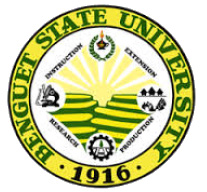
BSU Research Journal No. 75
BSU Research Journal No. 75
VISION
A premier State University in Asia.
MISSION
Development of people imbued with academic excellence, social conscience and productivity; and
actively generating and promoting environment-friendly, useful technologies to improve quality of life.
GOALS
1. Strengthen and sustain a working environment conducive for excellence;
2. Provide quality education that will produce globally competitive and well-rounded graduates;
3. Provide quality and client-responsive research and extension services;
4. Strengthen and enhance institutional capability in generating revenue towards self-reliance
5. Develop and strengthen quality management system towards economy; and
6. Strengthen and expand private public partnership.
PURPOSE
* To provide quality education that will produce globally-competitive graduates;
* To generate and disseminate appropriate knowledge and technologies that will promote sustainable
resource development;
* To strengthen and enhance institutional capability in generating revenue towards self-reliance;
* To establish competent and effective services geared towards efficiency and economy; and
* To develop harmonious and cooperative University Community relationships.
Benguet State University
RESEARCH JOURNAL
All communications should be addressed to:
THE EDITOR
BSU Research Journal
Benguet State University
La Trinidad 2601 Benguet, Philippines
Telefax: (+6374) 422-5547
Email address: bsupublications@gmail.com
Website: www.bsu.edu.ph
12 12